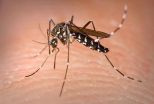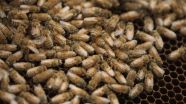(Press-News.org) Using ultrasound technology to visualize the tongue's shape and movement can help children with difficulty pronouncing "r" sounds, according to a small study by NYU's Steinhardt School of Culture, Education, and Human Development and Montclair State University.
The ultrasound intervention was effective when individuals were allowed to make different shapes with their tongue in order to produce the "r" sound, rather than being instructed to make a specific shape. The findings appear online in the Journal of Speech, Language, and Hearing Research.
The "r" sound is one of the most frequent speech errors, and can be challenging to correct. For other sounds – such as "t" or "p" – speech pathologists can give clear verbal, visual or tactile cues to help children understand how the sound is created. "R" is difficult to show or describe in an easy-to-understand fashion.
In addition, most speech sounds are produced in the same way, but with "r," normal speakers use widely different tongue shapes to create the sound. The two primary strategies to create the "r" sound include a retroflex tongue shape, where the tongue tip is pointed up, and the bunched tongue shape, where the tongue tip is pointed down and body of tongue bunches up toward the top of the mouth.
Up to 10 percent of children have speech sound disorders, according to the National Institutes of Health. Some children respond well to conventional forms of speech therapy, but others have errors that persist despite their therapists' best efforts. A growing body of evidence suggests that treatment incorporating visual biofeedback, which uses various technologies to create a dynamic visual representation of speech, could fill this need.
"The idea that you could get around the challenges with 'r' sounds by showing children their tongues as they are talking is really appealing to clinicians," says Tara McAllister Byun, an assistant professor in NYU Steinhardt's Department of Communicative Sciences and Disorders and the study's lead author. "That's what ultrasound technology lets us do."
Linguists have used ultrasound in the past to study basic functions of speech, and in recent years, speech pathologists have begun exploring using ultrasound to treat children with speech errors. An ultrasound probe – similar to ones used in cardiac and tissue imaging – is held under the chin, and sound waves capture real-time images of the tongue. The images provide both the child and speech pathologist with information about the tongue's position and shape.
Using the ultrasound images as a guide, children learn how to manipulate their tongues, and speech pathologists advise them on how to make adjustments to better achieve different sounds.
Several case studies and small studies suggest that ultrasound biofeedback can successfully correct "r" speech errors. Byun and her colleagues set out to gather systematic evidence on the effectiveness of the treatment, studying eight children with difficulty pronouncing "r" sounds. Seven of the eight had previous speech therapy that was unsuccessful.
Four children participated in the initial eight-week study. They were taught to make a bunched tongue shape, guided by ultrasound, in an effort to better pronounce "r." The researchers saw only small improvements among the four participants.
However, while trying to create a bunched tongue, one child stumbled upon a retroflex tongue shape and was able to improve her "r" sound. As a result of her success, the researchers altered their study design to allow participants to choose their own tongue shape, with individualized guidance from speech language pathologists.
A different four children participated in the second study over an eight-week period. Using ultrasound to visualize their tongues, all four participants in the second study showed significant improvement in their "r" sounds.
"Our second study offers evidence that when flexibility is given to choose a tongue shape, rather than a one-size-fits all approach, ultrasound biofeedback treatment can be a highly effective intervention for children with trouble pronouncing 'r' sounds," Byun says.
The researchers noted that the two studies were not a controlled comparison, thus additional systematic research is needed before drawing strong conclusions about the importance of individualized tongue shapes.
INFORMATION:
In addition to McAllister Byun, study authors include Elaine R. Hitchcock and Michelle T. Swartz of Montclair State University. The research was supported by the National Institutes of Health (NIH R03DC 012883).
About the Steinhardt School of Culture, Education, and Human Development (@nyusteinhardt)
Located in the heart of Greenwich Village, NYU's Steinhardt School of Culture, Education, and Human Development prepares students for careers in the arts, education, health, media, and psychology. Since its founding in 1890, the Steinhardt School's mission has been to expand human capacity through public service, global collaboration, research, scholarship, and practice. To learn more about NYU Steinhardt, visit steinhardt.nyu.edu.
Ultrasound guides tongue to pronounce 'r' sounds
2014-10-27
ELSE PRESS RELEASES FROM THIS DATE:
Slowing the biological clock
2014-10-27
Difficulty in conceiving a child is a major challenge for one in seven heterosexual couples in America, especially for those over the age of 35. Now a new discovery by researchers at Tel Aviv University and Chaim Sheba Medical Center at Tel Hashomer could boost the chances of conception in women undergoing in vitro fertilization (IVF) treatments.
Their new research reveals a linkage between the genes of the innate immune system — immunity with which human beings are born, rather than immunity they acquire during their lives — and ovarian longevity. The study, ...
'Sticky' ends start synthetic collagen growth
2014-10-27
Rice University researchers have delivered a scientific one-two punch with a pair of papers that detail how synthetic collagen fibers self-assemble via their sticky ends.
Collagen is the most common protein in mammals, a major component of bone and the fibrous tissues that support cells and hold organs together. Discovering its secrets may lead to better synthetic collagen for tissue engineering and cosmetic and reconstructive medicine.
The Rice lab of Jeffrey Hartgerink has been studying synthetic collagen for a decade, teasing out the details of how it starts as three ...
Hot on the trail of the Asian tiger mosquito
2014-10-27
The Asian tiger mosquito (Aedes albopictus), which is native to Southeast Asia, was spotted in Houston in 1985. By 1986 it had reached St. Louis and Jacksonville, Fla. Today it can be found in all of the southern states and as far north as Maine.
An aggressive daytime biter, Ae. albopictus has an affinity for humans and is also a vector for human disease, said Kim Medley, PhD, interim director of the Tyson Research Center at Washington University in St. Louis.
The mosquito arrived in the U.S. in a shipment of used tires from Japan. Ae. albopictus lays eggs that can ...
University of Delaware study connects penguin chick weights to local weather conditions
2014-10-27
Adélie penguins are an indigenous species of the West Antarctic Peninsula (WAP), one of the most rapidly warming areas on Earth. Since 1950, the average annual temperature in the Antarctic Peninsula has increased 2 degrees Celsius on average, and 6 degrees Celsius during winter.
As the WAP climate warms, it is changing from a dry, polar system to a warmer, sub-polar system with more rain.
University of Delaware oceanographers recently reported a connection between local weather conditions and the weight of Adélie penguin chicks in an article in Marine Ecology ...
Cost of informal caregiving for US elderly is $522 billion annually, study finds
2014-10-27
The price tag for informal caregiving of elderly people by friends and relatives in the United States comes to $522 billion a year, according to a new RAND Corporation study.
Replacing that care with unskilled paid care at minimum wage would cost $221 billion, while replacing it with skilled nursing care would cost $642 billion annually.
The study, published online by the journal Health Services Research, improves on earlier estimates about the value of informal caregiving by making use of the 2011 and 2012 American Time Use Survey, a new and unique database, to provide ...
PET scans reveal how psychodynamic therapy for depression may change brain function
2014-10-27
A study from Massachusetts General Hospital (MGH) investigators has identified for the first time changes in the metabolic activity of a key brain region in patients successfully treated for depression with psychodynamic psychotherapy, suggesting a mechanism of action behind one of the most historically important and widely practiced forms of therapy. They also found evidence that pretreatment metabolism in a different brain structure might predict which patients are likely to respond to that form of therapy. Their report will appear in the journal Psychotherapy and Psychosomatics ...
Blood vessel growth in the brain relies on a protein found in tumor blood vessels
2014-10-27
Do blood vessels that feed tumors differ from other blood vessels? Fourteen years ago, experiments designed to answer that question led to the discovery of several genes that are more active in tumor-associated blood vessels than in normal blood vessels. New research now reveals the normal function of one of those genes and suggests it could be a good target for anticancer drug therapy.
A summary of the research appears in the journal Developmental Cell on Oct. 27.
The mystery of the gene, TEM5, began in 2000 with research conducted by Brad St. Croix, Ph.D., working ...
Using microscopic bugs to save the bees
2014-10-27
For decades, honeybees have been battling a deadly disease that kills off their babies (larvae) and leads to hive collapse. It's called American Foulbrood and its effects are so devastating and infectious, it often requires infected hives to be burned to the ground.
Treating Foulbrood is complicated because the disease can evolve to resist antibiotics and other chemical treatments. Losing entire hives not only disrupts the honey industry, but reduces the number of bees for pollinating plants.
Now researchers at BYU have produced a natural way to eliminate the scourge, ...
Group classes teach parents effective autism therapy, Stanford/Packard study finds
2014-10-27
Parents can learn to use a scientifically validated autism therapy with their own children by taking a short series of group classes, a new study by researchers at the Stanford University School of Medicine and Lucile Packard Children's Hospital Stanford has found.
The therapy helped children improve their language skills, an area of deficiency in autism, according to the study, which will be published Oct. 27 in the Journal of Child Psychology and Psychiatry. The study is the first randomized, controlled trial to test whether group classes are a good way to train parents ...
A GPS from the chemistry set
2014-10-27
You don't always need GPS, a map or a compass to find the right way. What demands a tremendous amount of computational power from today's navigation computers can also be achieved by taking advantage of the laws of physical chemistry and practicing so-called "chemical computing". The trick works as follows: A gel mixed with acid is applied at the exit of a labyrinth – i.e. the destination – filled with alkaline liquid. Within a shorttime, the acid spreads through the alkaline maze, although the majority of it remains together with the gel at the exit. When an ...




